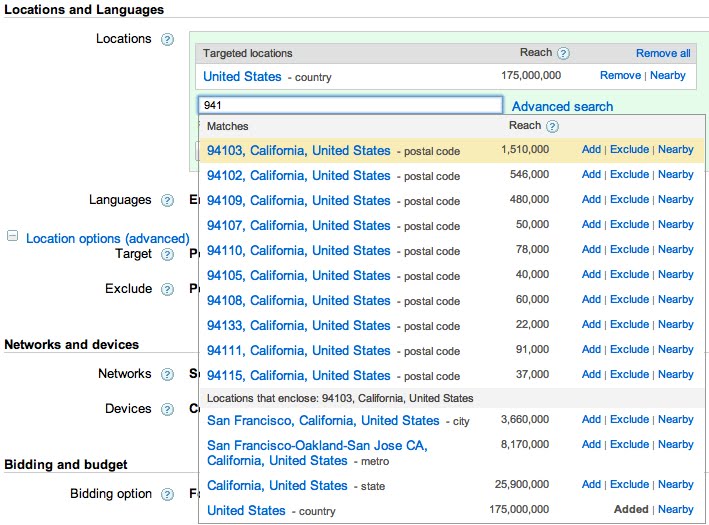Many local businesses that provide professional services have a specific ‘market area.’ Whether it be a cleaning service, moving company or franchise business, each might only be able to serve a specific territory depending on how far they are willing to travel from their base of operations.
This is why the Google Adwords Zip Code Targeting feature is a great addition to the platform’s location specific tool set. Previously, Google only enabled geographic targeting via city / major metropolitan area, as well as via radius targeting. Zip Code targeting enables a local business to really hone in on their specific market area. With the ‘bulk upload’ feature, a small business can turn a massive list of zip codes into a tidy market area fairly easily.
This feature comes especially useful in the case of a franchise businesses that has been assigned a specific geographic territory by their franchisor. Often, these geographic areas break down by zip codes that prevent nearby franchises from competing with one another. With Adwords zip code targeting, multiple franchises that border the same geographic area can easily split their targeting based on their market area.
There are a few downsides to zip code targeting in the US for local businesses. One problem is not all zip codes are included yet- about 20% of zip codes are not yet in Google’s database as of August – hopefully these will be added to complete this coverage.
Another current issue is that zip code targeting is not always representative of the area / population you actually will end up serving ads to. Although the map display of your zips may look like complete coverage in a specific area, this isn’t always the case. For example, if you are targeting a zip code within a specific city, but aren’t targeting the city itself, your ad won’t necessarily be showing there. We tested this with Google’s Ad Preview Tool; there were a few instances where the map display looked like a zip code was covering a specific city/area, but a test search in that specific location did not trigger our ad. This problem was solved by adding a city or radius on top of the zip code.
Because the zip code feature is still relatively new, these types of bugs / problems should be somewhat expected. We would always suggest using zip code targeting in conjunction with another form of targeting to ensure that you’re getting the full search volume that you set out to obtain. Hopefully, Google’s improvements to the zip code targeting feature will make it far more reliable.
